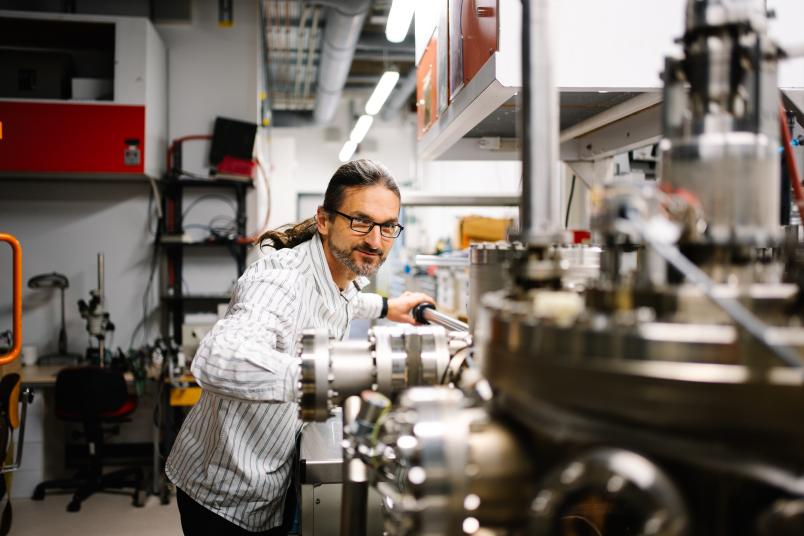
Arne Ludwig is one of four researchers who have been awarded the Synergy Grant. “Among other things, the project enables us in Bochum to reliably provide samples for quantum optics groups as a partner,” says Arne Ludwig.
New ERC-synergy project
Pushing the Frontier of Photonic Quantum Hardware
The project team aims to lay the foundation for future scalable photonic quantum technologies.
Scalable quantum information technology that processes information according to the laws of quantum mechanics is one of the main goals of current quantum physics research. Such quantum technologies can solve problems, which are impossible with the technology of today. In a new project, researchers from the University of Copenhagen, the University of Basel and Ruhr University Bochum will join forces and pursue a new approach to photonic quantum hardware to realize on-demand entangled photon generation using so-called quantum dots, which are photon sources realized on a solid state platform. Dr. Arne Ludwig from Bochum is involved in the European Research Council's Synergy Grant “PHOQUS,” which will receive 11.5 million Euros in funding over the next six years. “This funding makes a dream come true,” says Arne Ludwig happily. “Ideas that previously only existed on paper can now be turned into reality with a strong team and technological capabilities.”
By controlling the quantum dots with laser fields and collecting the emitted photons using optical nano-structures, it is possible to deterministically create highly entangled states of photons. These states are the essential resources for photonic quantum information processing. A particular advantage of the chosen approach is that it is highly modular and thus scalable, i.e. once sources of sufficiently high quality are realised, the technology can be scaled to larger processors simply by constructing more sources.
The project will tackle the challenge of creating advanced photonic resource states. To achieve this ambitious goal, the project will develop quantum dots and photonic nanostructures, with unprecedented quality and realize experimental capabilities to operate these sources. The quantum dots will be engineered to emit on-demand multi-photon entangled seed states of up to ten photons, and subsequently advanced quantum-information processors can be constructed that partially "consume" these basic seed states. Finally, proof of principle experiments will demonstrate how to scale the technology into fully functional quantum information processors. Thereby the project will lay the foundation for future photonic based quantum technologies.